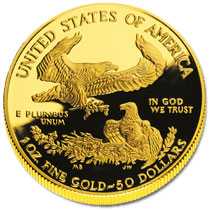
Vice President Richard Jozefiak called the MCCC to order at approximately 7:20p.m. on the frigid winter night of January 11, 2000. (President William C. Massey was unable to attend because of illness; we wish him a speedy recovery!) There were 26 collectors present, including 3 Young Numismatists (YNs). Everyone gave a warm welcome to Vernon Howard, grandson of long-time MCCC member and arborist Joe Howard. (Joe announced, "I'm trying to get some of my grandchildren interested in coins, so I'll have someone to leave my collection to!")
Ken began by observing, "You can tell a lot about a country by its money and the changes in its money." The condition of money is a rough indicator of the inflation rate; the rattier the money, the lower the inflation. Mozambique, for example, suffered from a serious 18-year-long civil war, through 1993, during which time its government was "leftist" (to put it mildly!). The government of Mozambique abruptly swung 180 degrees and now is attracting outside capital in large amounts. The paper money in Mozambique is noteworthy in that it is filthy --- "VG" condition at best. The designs of that money and associated coins look Eastern European, with the typical agricultural wreath, crossed hoe and AK-47 with star behind it ... very pre-revolutionary in style. "The money is in awful shape,", Mr. Swab remarked --- and thus inflation is under control.
A country that illustrates the opposite side of that rule is Zambia. There are lots of crisp new bills in circulation, Ken remarked, and rampant monetary inflation. Mr. Swab displayed a beautiful set of 20, 50, 100, 500, and 1000 kwacha notes. The exchange rate in Zambia when he arrived was 2400 kwacha to the dollar; by December the value of the currency had fallen to 2600 kwacha/dollar.
The 20 kwacha note is thus worth less than 1 cent; it must cost more than that to print one. Zambian money is full of the usual anti-counterfeiting devices: threads, watermarks, reflective ink, color-shifting patterns, etc. This seems most peculiar for such low denominations. About all one can purchase with a 50 kwacha note is a single cigarette or perhaps a pencil.
There are no coins in Zambia, Mr. Swab commented --- none whatsoever. What does this imply? No ordinary pay telephones exist, for one thing; people need to use phone card to make calls. There are also no coin-operated vending machines. Zambia used to have coins, until about 1992 when the kwacha began to lose most of its value. (Kermit Smyth commented that he found some coins there when visiting in 1993, but they were issues of 1992 and earlier.)
Ken Swab observed, "There are two things in the world that are absolute certainties: you can always give U.S. dollars, and you can always get Coca-Cola. ... Coke truly rules the world." He also noted that, in the region he visited, South African money is widely accepted; the Union of South Africa dominates the area economically. With the end of apartheid in 1994 and the lifting of trade sanctions, South Africa became much more integrated with its neighbors. There is now much resentment, as well as envy, in other nations toward South Africa.
After an entertaining discussion of the difficulties associated with travel in the region, Mr. Swab exhibited a 10 Rand (South African) note with a "white rhino" design. (The white rhino is actually gray or brown; it is called "white" from a linguistic confusion with "wide".) There are two languages on the bill, Afrikaans and English.
Ken discussed a visit to Victoria Falls ("Victoria Mist" would be more accurate, he suggested) and talked about his travels in Zambia, Zimbabwe, and Botswana. He showed a nice Botswanan 5 kula note with an antelope design on the reverse. The exchange rate is ~4.4 kula/dollar. "Timing is everything in life," Ken noted. Botswana is basically a desert, but with the discovery of diamonds there, the country became stable economically and politically. Inflation is moderate. Ken passed a few tebbae coins around the room (100 tebbae = 1 kula). Coins become smaller during times of inflation, in his experience. Most coins in southern Africa today are made of stainless steel (sometimes plated) or copper-nickel. (Of the Botswana coins that MCCC members examined, the older was nonmagnetic, and the newer was attracted by a magnet.)
Believe it or not, one can collect things other than coins and currency! Mr. Swab showed an extensive set of bottlecaps which he acquired at various African bars on behalf of another MCCC member. (It was a tough job, but somebody had to do it.) Each country has its own beer; Mosi is Zambia's beer, Vinhooek is Namibia's lager; etc. (Kermit Smyth advised, "In Tanzania, no two beer bottles are filled to the same level. Just pick out the fullest one.")
Counterfeiting is a problem in many places, according to Mr. Swab. So are scams, including some involving fake machines and solvents that are reputedly able to raise the denomination of a bill. A variation of this in South Africa, the "Black Dollar" scheme, has apparently cheated some victims out of hundreds of thousands of dollars. "Greed is universal," Ken noted.
For stamp collectors, Mr. Swab exhibited some letters from Zambia with nice stamps. He noted that the 500 kwacha stamp on one was raised from 100 kwacha, officially revalued via overprinting by the government.
In response to a query from the audience, Mr. Swab explained that his trip was related to a project working to reduce non-tariff impediments to trade --- specifically, helping formulate multilateral agreements on motor vehicle insurance. This is a serious problem in areas such as southern Africa, where countries are small.
After Mr. Swab's presentation and a break for refreshments, Don McKee conducted the monthly club auction. The meeting adjourned at approximately 9:30p.m.